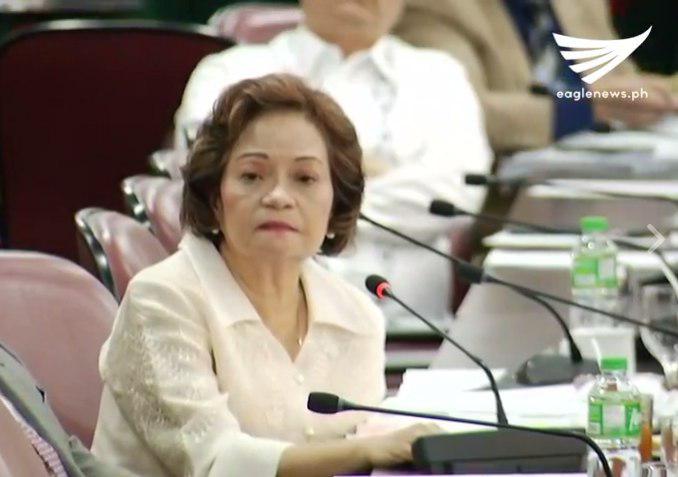Says Admin Order No. 175-2012 runs counter to previously issued en banc reso

(Eagle News) — Associate Justice Teresita de Castro on Wednesday said she was “aghast” when Supreme Court Justice Maria Lourdes Sereno’s issued an administrative order creating the Judicial Decentralized Office in Cebu, noting that this ran counter to a resolution approved by the SC en banc previously.
“I’ve always been very courteous and respectful to the Chief Justice, even if I’m so aghast with what she has done in issuing administrative order No. 175-2012..,” she said.
According to De Castro, this was because when she compared the administrative order issued by Sereno in 2012, “it did not conform to the administrative resolution adopted by the court en banc” previously.
She said the en banc resolution created a Regional Court Administration Office in the seventh judicial region, while Sereno’s administrative order created a (JDO) for the seventh judicial region.
“It shows a deliberate act of not referring to the (RCAO) which would place this office under the court administrator. Then this will be independent of the Office of the Court Administrator and this will be contrary to law because it is the (OCA) that assists the court in the administrative supervision of all courts,” De Castro said.
She added that while the RCAO was a “pilot decentralized unit implemented over a one-year period,” Sereno’s administrative order said that the JDO would be implemented “effective immediately” and it would be up to the Chief Justice to decide until when it would stop, thereby creating a “sense of permanency.”
De Castro added that in Sereno’s administrative order, the JDO head was designated by the Chief Justice, who, at that time was program management head Geraldine Econg, and not an official of the OCA.
“The official functions in pilot RCAO are vested in the court administrator, deputy regional court administrator, assistant regional court administrator…In the administrative circular, the official functions are designated to the JDO,” De Castro said.
She said there was also a discrepancy in the way personnel should be hired in the administrative order and the en banc court resolution.
According to De Castro, as soon as she saw the discrepancies, she wrote a letter on Nov. 26, 2012, and asked that this be placed in the agenda of the court en banc which holds its meeting every Tuesday.
“We took this up during the en banc session and deliberated on it. I explained my position. The CJ was there,” De Castro said.
She said the justices agreed with her position, and, so as not to embarrass Sereno, decided to designate the program management head, Econg, as the head of a study group that will look into the feasibility of such a project instead.
She said Sereno said then that she would amend her administrative order.
“I gave time to the Chief Justice to prepare the resolution. Because there are so many items in the agenda, a few days I called up the clerk of court and asked for a copy of the resolution. Ang sabi ni clerk of court Enriquietta Vidal, sabi niya niratify niyo raw,” De Castro said.
She said on Dec. 3, she wrote Sereno again raising the same matter, but she did not reply.
The issue was again taken up by the en banc, and it was decided that Jose Perez instead would head the study group.
De Castro said the en banc sided with her again, and issued a resolution that superseded all previously issued ones, a resolution she said was a subtle rebuke of Sereno.
“She didn’t say anything, she didn’t answer my letters. She didn’t do anything,” De Castro said.







